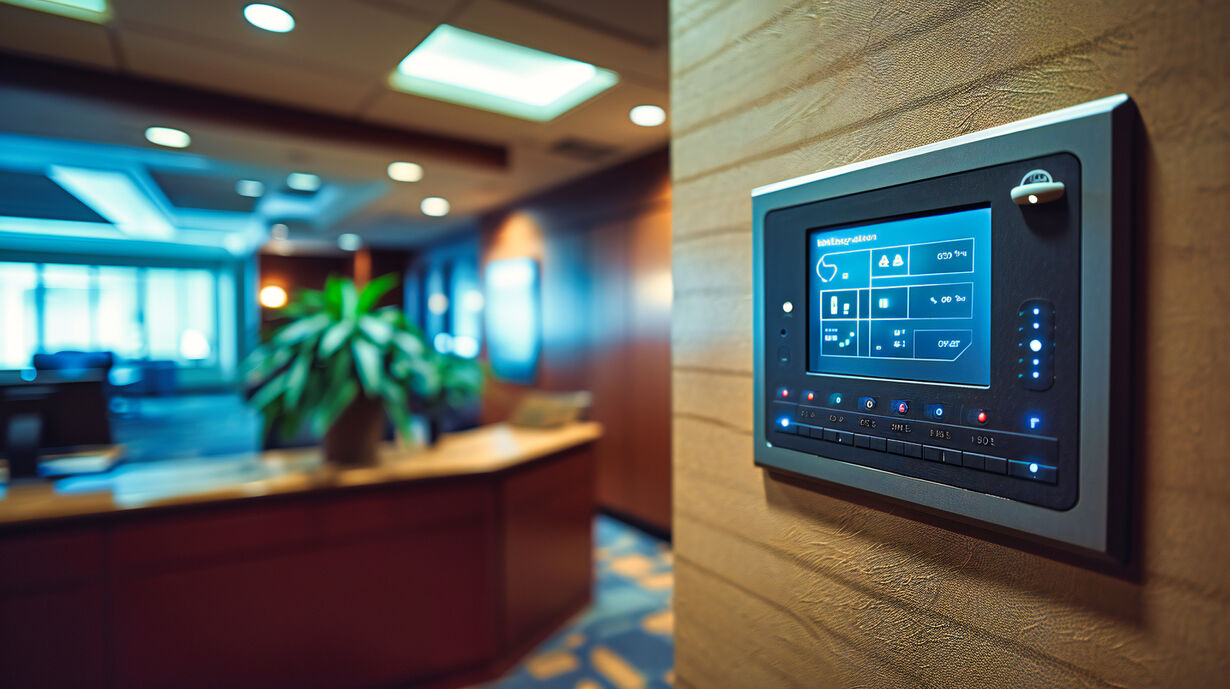Interest in building automation is surging in B.C. according to Google searches for the last 12 months—and we’re all for it. We help demystify the fundamentals of smart buildings in this series on building automation basics.

As interest in building automation grows, the role of the sensor is more important than ever.
Interest in building automation is rising. Searches for the term on Google in Canada and British Columbia have been rising over the last 12 months, reaching their peak in February of this year. We love to see the interest in one of our specialties from people in our home province and thought we could take the time to break down some of the fundamentals of building automation systems, starting with the eyes, ears, and feeler of building automation—sensors.
What role do sensors play in building automation?
When a room can automatically brighten at a shadier time of day or keep people cool as the number of bodies in the room increases the ambient temperature without a second (or even first thought) from you—that’s the work of sensor technology.
How do sensors work? The bike messengers of your building
While the HVAC systems of your building are working hard to keep you comfortable and safe, think of the sensors as the bike messengers of your building’s internal systems. As the sensor collects the information it needs, it communicates it back to the building’s controls. That feature is adjusted automatically, communicating vital information from the outside world back to the hardware that makes your building tick. Sensors are able to communicate so efficiently with your building thanks to the Internet of Things, the technical name for your building’s universe that keeps all the pieces interconnected.
What types of sensors are used in building automation?
There are a wide variety of sensors used to transform your office, lab, or commercial space into a smart building. Many features of a room that can be adjusted through your building automation system may have their own sensor, which plays a role in collecting information about a room, like lighting, humidity, or temperature. A standard building automation system can have as many as seven sensors to keep things running smoothly!
Some examples of sensors used in building automation systems:
-
Humidity: Beyond occupant comfort, this is an incredible feature for some specialized industries, like cannabis growing and processing facilities. See how we helped our client, Valens Lab.
-
Lighting: Go beyond brighter and darker with lighting automation sensors that can adjust for colour, intensity, and daylight.
-
Sound and motion: These sensors use audio and movement cues to detect room occupancy and increase energy efficiency.
So, where do they all go?
We are so glad you asked! There’s a reason you don’t walk into a room and see seven separate spherical features mounted on the ceiling—that would look a bit overwhelming. Our go-to for sensor technology is made by B.C. technology company, Delta Controls. The award-winning O3 Sensor Hub integrates all of the sensors for your building into one ceiling-mounted, app-friendly hub.
Work with a people-first company that’s on the cutting edge of building automation, HVAC, and electrical technology in the Thompson-Okanagan. See how Kimco can help.

Subscribe to our newsletter
Stay up to date about our company, product news & industry articles.

